Medicaid in Iowa can provide benefits to cover the cost of long-term care, but only if you meet the requirements. The program is designed to pay for care for those with limited resources.
One key question is just how limited those monetary resources need to be to qualify for Medicaid. At Huizenga Law, we help clients with strategies to establish eligibility without unnecessary waste of assets, so we keep a close eye on the requirements. The rules can change at any time, but here is how the limits look under the current regulatory guidelines.
Remember to Look at Income as Well as Assets
Before considering the exact asset figures, it is important to remember that financial eligibility rests on two factors. Officials will consider both assets and current income flow, and both must be below the threshold to qualify for long-term care benefits. When the spouse seeking benefits is married to a spouse still living in the couple’s home, the rules can get very complicated.
The income of the person applying for Medicaid cannot be more than three times the monthly Supplemental Security Income cash benefit for nursing home care. Currently, the income limit stands at $2,742 per month. This includes income from Social Security benefits, most VA benefits, IRA distributions, pensions, and any other income source. A personal needs allowance of $50 is also allowed and not counted toward the income limit.
Asset Limit – Look at More Than Money in the Bank
When determining Medicaid eligibility, officials look not only at money in your bank account. They look at absolutely everything you own. Some of your property is considered “exempt” which means the value won’t be counted against you for eligibility purposes. Exempt assets include:
- Clothing
- Household furnishings
- One vehicle
- A funeral contract that cannot be revoked or sold
An individual’s house is often exempt if they live in it, their spouse lives in it, or they intend to return to the home. In addition, their equity interest in the home must usually be less than $688,000 for it to be “non-countable.”
Cash and assets that can be easily converted into cash including stocks, bonds, and investments count toward the asset limit. Assets that aren’t as easy to convert to cash, such as real estate, also must be sold and converted to cash to use toward care expenses, unless they have been divested earlier.
How Much Can You Keep?
If you want to receive Medicaid long term care benefits, you may only keep $2,000 in the bank or in other total assets unless you are married. Anything that you have given away, transferred to a trust, or sold for less than market value in the prior five years will be counted as if you still owned it. In other words, you can’t just give everything to your kids or move it to a trust and then sign up for benefits the next day. That’s why planning ahead is so crucial. There are ways to transfer funds and make strategic purchases to avoid unnecessary depletion of your resources while you are establishing Medicaid eligibility.
For married couples, all property is considered to be jointly owned, which can be a hardship for a spouse staying in the home while the other is trying to qualify for Medicaid. The Community Spouse Resource Allowance allows the spouse not living in the nursing home to keep up to half of the couple’s assets up to an amount of $148,620. (If half of the assets amounts to less than $29,724, the spouse at home can keep all of those assets.)
Huizenga Law Can Help You Develop a Workable Plan to Qualify for Medicaid
The asset and income limits for Medicaid long term care benefits are extremely low, and the numbers are discouraging to many people. However, proper advance planning can make a world of difference.
Talk to the team at Huizenga Law to find out how we can use different strategies to enable you to qualify for Medicaid benefits without spending all of your resources on care costs.


